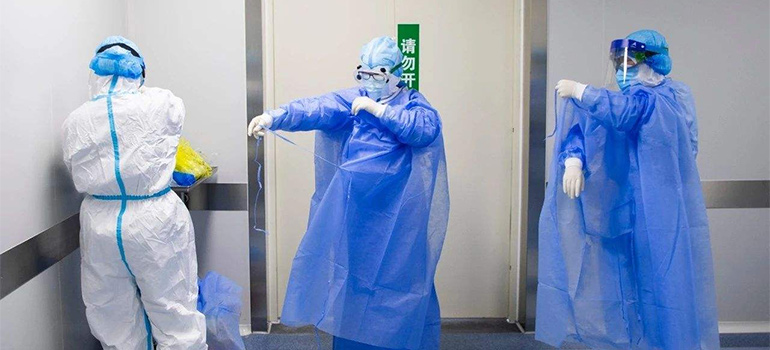
According to the Centers for Disease Control and Prevention (CDC), health care workers may be exposed to biological fluids that can convey diseases caused by viruses, such as hepatitis B, hepatitis C, human immune deficiency virus, Ebola virus, etc. The design of protective clothing (such as isolation gown, coverall and surgical clothing) can protect medical staff and patients from harmful microorganisms transmitted by blood and body fluids, and should be worn in the presence of exposure.
Isolation gown selection elements
There are three primary factors affecting the selection of personal protective equipment (PPE) protective clothing: Usage, The Risk Degree, Fabric
Usage
Isolation gown is generally the preferred PPE clothing. If you expect contamination of your arms, choose isolation gown with long sleeves and coverall, lab coat etc. protective clothing. The isolation gown should fit the body comfortably, cover the torso, and the long sleeves should be close to the wrist. Although they play an important role in infection prevention and control, it is well known that textile materials and personal protective equipment (PPE) used in health care environment are one of the origins of cross infection. Advocate wearing robes to prevent the transmission of infectious diseases in some environments; However, laboratory and field research have produced different results on its effectiveness. In the United States, PPE used in health care is classified as class I (low risk) or class II (medium risk) equipment. Many arrangements have released strategies for the use of PPE (including barrier clothing) in healthcare environments. In addition, the Association for the promotion of medical devices has also issued teaching documents on the selection of protective clothing for surgical clothing and barrier clothing and classification standards for the function of liquid barrier. However, there is no existing standard specifically for barrier services. We should not only consider the barrier, but also consider the various features required by end users. Therefore, infection prevention experts and procurement agents face some difficulties in the selection process, and the end users have limited or no information on the protection level of barrier service supply. During the Ebola epidemic in 2014, the lack of understanding of the function of protective clothing for medical care became more obvious.
